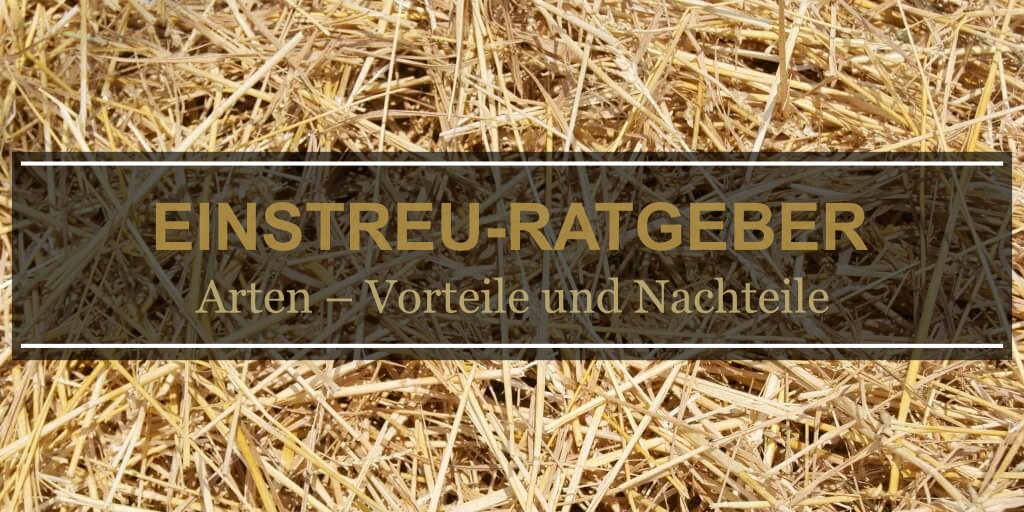
Hintergrundquelle: bgfons.com
Unsere Pferde verbringen einen großen Teil ihres Tages (sogar mehr als 20 Stunden am Tag) nicht auf der Weide, sondern im Stall. Wie viel Zeit sie tagsüber in der Box verbringen, variiert je nach Jahreszeit, Art der Nutzung und Gesundheitszustand. Die Box ist ein Ort, an dem sich ein Pferd ausruhen, seine physiologischen Bedürfnisse ausführen und schlafen kann. Je nachdem in welchem Zustand wir diesen Platz pflegen, wirkt sich das positiv oder negativ auf unser Tier aus. Die Bedingungen, die wir ihm bieten, bestimmen sein Wohlbefinden, seinen Allgemeinzustand und seine Gesundheit.
Das wichtigste Element in der Pferdebox ist das Einstreu, das drei grundlegende Funktionen hat: Es hält sie Box sauber, absorbiert Flüssigkeiten, schützt die Hufe vor hartem Untergrund (z. B. Beton) und ermöglicht dem Tier, in einer liegenden Position zu ruhen. Leider kann schlecht gepflegte Einstreu gesundheitliche Probleme für unser Pferd und Allergien und Atemwegserkrankungen verursachen.
Es besteht also kein Zweifel, dass sie die wichtigste Rolle in den Pferdeboxen spielt. Aus diesem Grund haben wir uns entschieden, alle auf dem Markt erhältlichen Streus zu untersuchen und ihre Vor- und Nachteile sowie ihre Günstigkeit zu analysieren. Welches sollte man auswählen? Beurteilen Sie selbst :)
1. Langstieliges Stroh
Wir beginnen mit Stroh, weil es die beliebteste Einstreu in Polen ist. Warum? Weil es leicht verfügbar und weithin als billige Lösung anerkannt wurde. Ist das wirklich wahr? Wir werden dies später berücksichtigen und die Kosten seiner Verwendung sorgfältig analysieren. Zunächst möchten wir jedoch seine Mängel analysieren.
Erstens: Lagerung. Leider erfordert die Wahl einer solchen Streu den Kauf eines größeren Vorrats für den Rest des Jahres. Am Ende des Sommers sollten wir ausrechnen, wie viel Stroh wir kaufen müssen, um genug Stroh für den nächsten Sommer zu haben, weil es beispielsweise im Winter schwierig sein kann, Stroh zu bekommen. Ballen oder Würfel aus Stroh nehmen viel Platz ein und nicht jeder hat genug davon, um sie zu lagern. In vielen Ställen wird Stroh im Freien gelagert, sehr oft ohne jeglichen Schutz, der es vor schädlichen Witterungseinflüssen (Regen, Gewitter) schützen könnte. Die Folge davon ist die Zerstörung von Stroh - Fäulnis, Schimmel, was unsere Kostenkalkulation für diese Art von Einstreu sicherlich stören kann, weil wir einen Teil der Bestände wegwerfen müssen.
Die Verwendung von Stroh als Einstreu im Stall ist auch mit entsprechenden Maschinen verbunden, z.B. einem Gabelstapler, insbesondere bei der Verwendung von Ballen, die viel größer als Würfel sind.
Langstieliges Stroh absorbiert nicht optimal Ammoniak, das aus Pferdeurin ausgeschieden wird, und gibt den charakteristischen und unangenehmen Geruch ab, den wir alle beim Betreten des Stalls spüren.
Ein weiterer Nachteil dieser Einstreu ist, dass sie nicht zu viel Feuchtigkeit oder Flüssigkeit, einschließlich Pferdeurin, aufnimmt. Um zu verhindern, dass sich im Stall nasse Pfützen bilden, sind wir gezwungen, eine dicke Schicht Stroh unseren Pferde zu streuen. Leider können viele Pferde Stroh vom Boden fressen, wenn ihnen das Heu ausgeht. Auf diese Weise kann unsere „dickere“ Schicht sehr schnell verschwinden. Die Wirkung ist schlecht, besonders wenn wir abends unseren Tieren Stroh gestreut haben und sich morgens herausstellt, dass es weg ist. Man geht in den Stall rein und Ihr Pferd steht praktisch auf dem Beton, in einem erbärmlichen Zustand, weil es nachts in seinen Exkrementen gelegen hat. Kennen Sie das?
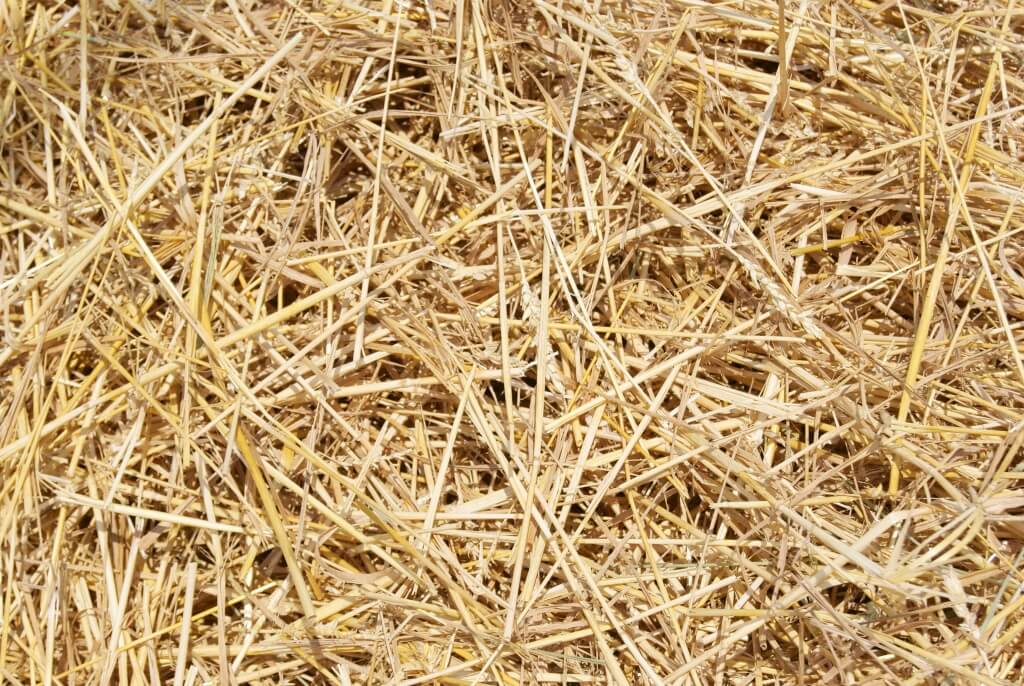
Quelle: bgfons.com
Wir sollten auch daran denken, dass Stroh nicht gleich Stroh ist. Seine Qualität hängt unter anderem vom Wetter während der Ernte oder der Art seiner weiteren Lagerung ab. Daher kann die Feuchtigkeit oder Staubigkeit des Strohs je nach ausgewähltem Lieferanten variieren. Es kommt auch vor, dass das Stroh, das wir kaufen, verschimmelt ist. Wie kann man es erkennen? Das Stroh ist dann kompakter, schwerer, verliert seine natürliche Fließfähigkeit und riecht außerdem nicht gut. Charakteristisch ist auch seine Farbe: sehr dunkel.
Stroh, das bereits mit Schimmelbildung begonnen hat, ist voller Staub, Pilzkeime und wird zu einem starken Allergen. Leider führen solche Erkrankungen am schnellsten zu Atemproblemen wie RAO (Recurrent Airways Obstruciton, früher COPD: Chronic Obstructive Pulmonary Disease) oder anderen bakteriellen Infektionen. Außerdem kann der Verzehr von solchem Stroh durch ein Pferd zu Koliken führen – mehr oder weniger gefährlich.
Eine weitere wichtige Frage ist: Wohin mit dem gebrauchten Stroh? Um eine Box mit Stroh sauber zu halten, muss es mindestens einmal pro Woche komplett ausgetauscht werden. Der Mist sammelt sich also in großen Mengen an. Die EU-Vorschriften verlangen, dass gebrauchte Langstroh-Einstreu an speziell vorbereiteten Orten gelagert werden muss, die das Eindringen von Gülle in den Boden verhindern. Dies ist eine weitere Investition, die wir als Stallbesitzer tätigen müssen. Die Mistmenge wird von Monat zu Monat zunehmen. Was also tun, wenn wir keinen Platz mehr zum Aufbewahren haben? Früher holten die Bauern Mist aus den Ställen, um ihn als Dünger für ihre Felder zu verwenden, und lieferten im Gegenzug Stroh an die Ställe. Heute muss jedoch der Eigentümer der Stallungen die Kosten für die Entmistung tragen und zahlt je nach Region Polens einen angemessenen Geldbetrag.
Die Kosten für das Füllen einer leeren Box: 6-10 PLN (2 Würfel je 3-5 PLN/Stück)
Gebrauch: kompletter Einstreuwechsel 1x/Woche, man muss täglich Stroh nachfüllen (mindestens 1/2 Würfel am Tag).
2. Sägemehl und Späne aus Produktionsabfällen
Die zweite beliebte Lösung in Polen sind Sägemehl oder Späne aus Produktionsabfällen bei der Verarbeitung von Holz aus Sägewerken und Tischlereien. Die Besitzer von Pferden, die Probleme mit den Atemwegen haben, allergisch sind oder Stroh fressen, was es unmöglich macht, ihre Ernährung zu kontrollieren, entscheiden sich in der Regel für den Kauf von Sägespänen.
In der Vergangenheit war die Beschaffung von Sägespänen kein Problem, da Holzverarbeitungsbetriebe bereit waren, unnötigen Abfall kostenlos oder für einen symbolischen Betrag abzugeben. Der Besitzer eines Gestütes musste lediglich deren Verladung und den Transport in den Stall übernehmen. Das ist heute nicht so einfach. Viele Unternehmen wurden gegründet, um Briketts (hauptsächlich Brennstoffbriketts) aus Spänen oder Sägespänen herzustellen, und sie kaufen alle Abfälle von Sägewerken und Tischlereien für beträchtliches Geld.
Der Hauptvorteil von Sägemehl und Spänen als Einstreu ist ihre hohe Feuchtigkeitsaufnahme. Durch ihre Verwendung ist es einfach, die gewünschte Trockenheit und Sauberkeit im Pferdestall zu halten. Außerdem frisst unser Pferd sie nicht systematisch, so dass häufiges Bestreuen nicht erforderlich ist.
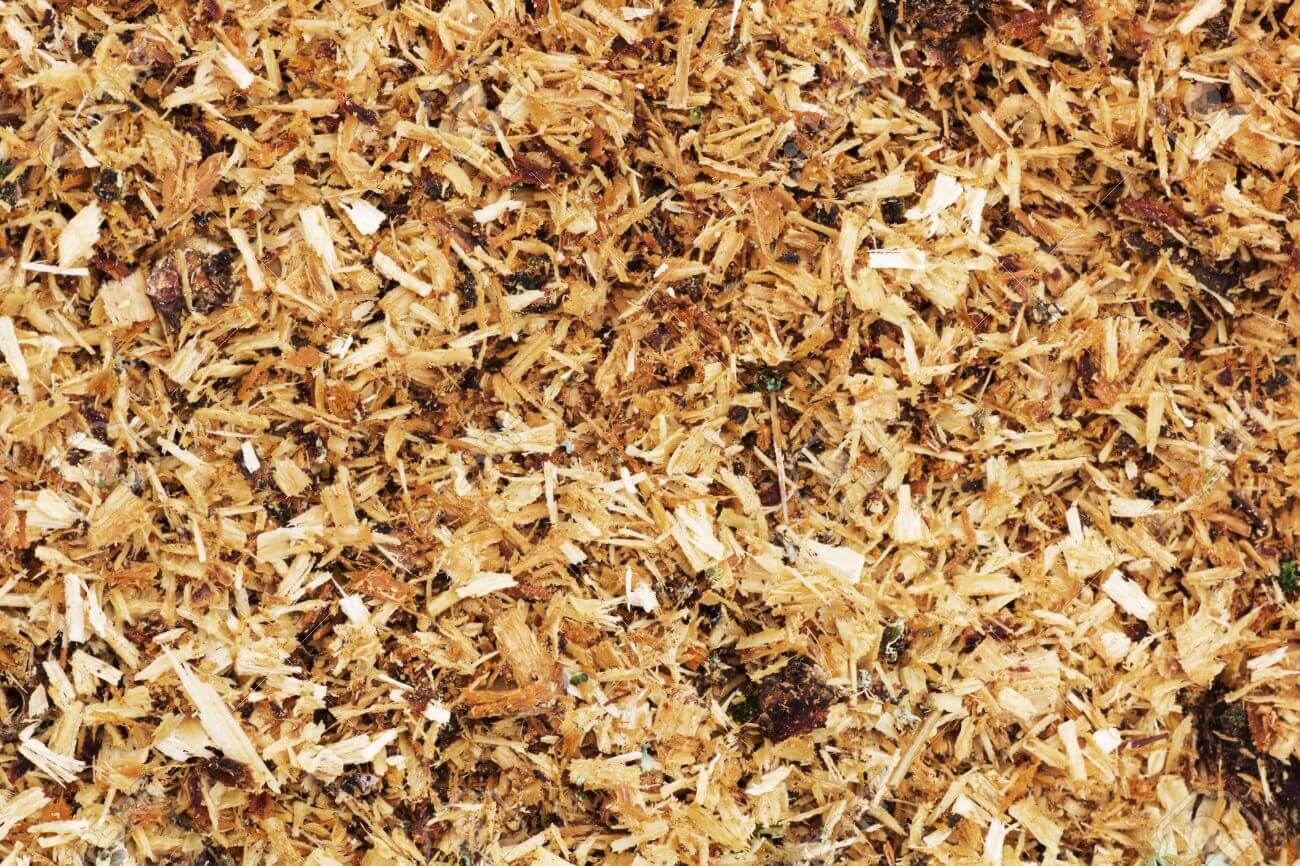
Quelle: 123rf.com
Was die Nachteile von Sägemehl und Spänen betrifft: Ihr Transport ist nicht einfach, weil es sich um ein loses Material handelt, das besondere Bedingungen während des Transports erfordert. Der zweite Nachteil kann die Notwendigkeit sein, sie an einem trockenen und sauberen Ort zu lagern.
Das größte Problem kann jedoch ihre hohe Staubigkeit sein. Bei Pferden mit allergischen und respiratorischen Problemen können sie daher den Krankheitszustand verschlimmern. Auch unbehandelte Späne und Sägemehl aus Produktionsabfällen können bei Pferden die Bronchialreizung verstärken oder Bindehautentzündungen verursachen. Das liegt an den darin enthaltenen Milben, Mikroben und Pilzsporen. Erwarten Sie daher beispielsweise keine Verbesserung der Gesundheit eines Pferdes mit RAO, wenn es auf dieser Art von Einstreu steht. Seine gesundheitlichen Probleme werden sich wahrscheinlich verschlimmern.
Wir müssen auch berücksichtigen, dass Holz in Sägewerken und Zimmereien oft mit chemischen Imprägnier- und Antimykotika behandelt wird, die sowohl für Pferde als auch für Menschen sehr schädlich sind. Wir sollten auch bedenken, dass wir immer prüfen müssen, ob in den gekauften Sägespänen keine unangenehmen „Überraschungen“ enthalten sind, wie z. B. scharfkantige Holzstücke oder Nägel, die unser Pferd ernsthaft verletzen können.
Lohnt es sich also, in Späne oder Sägemehl aus Produktionsabfällen zu investieren? Ja, aber nur für den Fall, dass wir die Möglichkeit der Weiterverarbeitung in unserem Stall haben - Selektieren, Filtern und Entstauben der gesamten Einstreu. Dies ist natürlich mit zusätzlichen Kosten verbunden ...
3. Kommerzielles Sägemehl und Späne
Fertigmischungen auf Basis von Spänen und Sägespänen als End- oder Halbfertigprodukt sind eine komfortable Alternative zu Einstreu aus Produktionsabfällen. Sie enthalten keine chemischen oder biologischen Schadstoffe oder schädlichen Staub. Solch vorgefertigtes Sägemehl oder Späne sind oft mit Präparaten getränkt, die den Prozess der Ammoniakausscheidung aus Pferdeurin hemmen, wodurch wir gleich nach dem Überqueren des Eingangs zu unserem Stall oder unserer Box keinen unangenehmen Geruch wahrnehmen. Dadurch bleiben auch die Atemwege unserer Pferde sicher, weshalb diese Art von Einstreu für Pferde mit RAO-Problemen oder Allergien empfohlen wird. Auch gefräßige Pferde, die keine Mäßigung beim Essen kennen, haben keine Chance, dieses Einstreu zu naschen. Vor allem, wenn sie aus irgendeinem Grund eine Diät machen müssen oder zu wiederkehrenden Koliken neigen.
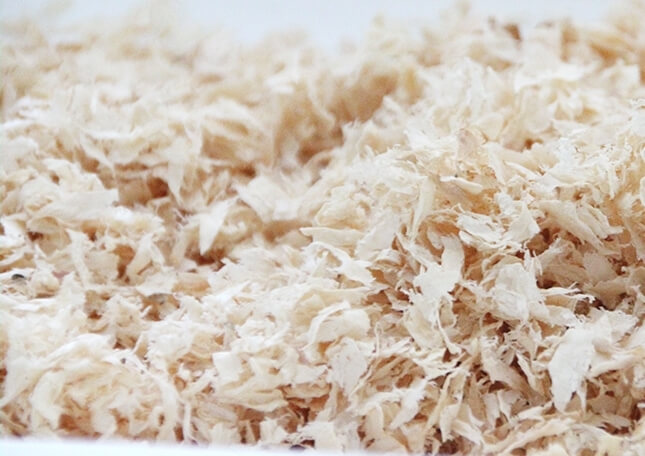
Quelle: tigerpet.en.alibaba.com
Handelsübliches Sägemehl und Späne haben eine hohe Feuchtigkeitsaufnahme (300 %), auch von Pferdeurin, wodurch die Box einfach sauber zu halten ist. Ihr großer Vorteil ist auch die einfache Lagerung und Gebrauch. Normalerweise können wir sie in Form von gepressten Ballen kaufen, die fest in Folie eingewickelt sind, damit sie nicht der Umwelt ausgesetzt werden. So können Sie sie problemlos draußen oder an einem leicht feuchten Ort aufbewahren.
Indem wir die leere Box mit dieser Streu auskleiden, müssen wir keine dicke Schutzschicht schaffen. Wenn wir den Kot unseres Pferdes jeden Tag entfernen, sollten wir nicht mehr Sägemehl als einen Balken in einer Woche verwenden, um die Box dazu zu streuen. Achten Sie jedoch darauf, keine Einstreu mit geringem Flächengewicht (sehr feine, kleine Stücke) zu verwenden, da Sie sonst einen unangenehmen „Matsch“-Effekt in der Box bekommen. Diese Einstreu werden wir öfter komplett austauschen müssen.
Letztendlich erhalten Sie durch die Verwendung von handelsüblichen Spänen oder Sägemehl nur eine kleine Menge Mist. Man sagt, dass der auf dieser Einstreu gebildete Mist erst nach einem Jahr Kompostierung als Dünger geeignet ist. Wir könnten also ein Problem haben, den produzierten Kompost so lange zu lagern. Wenn es jedoch eine Pilzfarm in der Nähe gibt, die solche Gülle gerne früher annimmt, ist unser Problem gelöst. Ansonsten sollten Sie genau überlegen, ob es für uns eine rentable Lösung ist.
Die Kosten für das Füllen einer leeren Box: für einen Ballen von 24/25 kg zahlen wir 20 bis 55 PLN (je nachdem, ob wir einzelne Ballen oder auf einer Palette kaufen), das Füllen einer leeren Box braucht etwa 3-4 Ballen
Gebrauch: man muss 1 Ballen/Woche hinzufügen
4. Häcksel von Flachsstroh und anderem verarbeitetem Stroh
Einstreu aus aufbereitetem Flachsstroh ist auf dem polnischen Markt noch vor nicht allzu langer Zeit erhältlich. Diese ohne Chemie angebaute Pflanze wird bewurzelt, mehrfach abgestaubt und geschnitten. Leinen blockiert dank seiner biochemischen Substanzen auf natürliche Weise die Freisetzung von Ammoniak aus Pferdeurin. Darüber hinaus kann Flachsstroh fünfmal mehr Flüssigkeit aufnehmen als sein Ausgangsgewicht. So ist seine Feuchtigkeitsaufnahme beeindruckend. Alles dank der Struktur seiner Zellen, die sich dauerhaft an die Wassertropfen binden. Deshalb bleiben auch nach Aufnahme einer hohen Feuchtigkeitsdosis die obersten Schichten der Einstreu trocken.
Pferde sollten wegen seines charakteristischen Geschmacks nicht daran interessiert sein, dieses Stroh zu konsumieren. Es ist jedoch wichtig, dem Pferd einen gleichberechtigten Zugang zu Heu zu ermöglichen, weil es möglich ist, dass es sich mangels anderer Nahrung dazu entschließt, sich mit Flachsstroh zu ernähren, was Koliken verursachen kann.
Ein großer Vorteil dieser Einstreu ist die schnelle Zersetzung und ein natürlicherer pH-Wert (im Vergleich zu langstieligem Stroh).
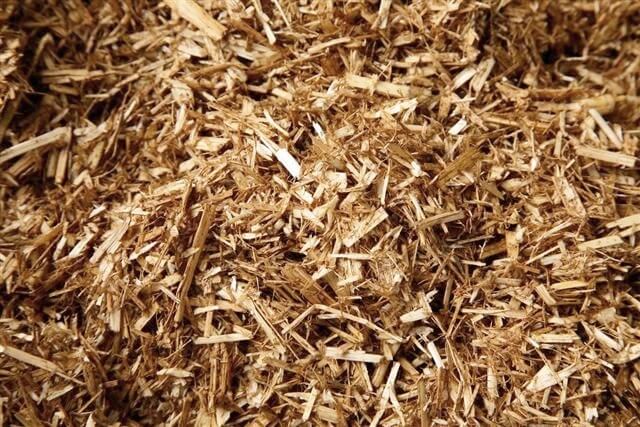
źródło: kehoefarming.com
Auf dem polnischen Markt finden wir auch Granulate aus Stängeln und Blättern von Getreide. In der Regel handelt es sich dabei um Mischungen aus Flachsstroh, Ackerbohnen und Raps. Durch die thermische Behandlung und Entstaubung im Produktionsprozess ist es frei von jeglichen Mikroorganismen, Pilzsporen und Staub. Außerdem ist sein Wasser- und Harzgehalt reduziert, so dass seine Feuchtigkeitsaufnahme viel höher ist.
Seine Kompostierungszeit ist zweimal kürzer als die von Langstroh, daher sollten wir kein Problem mit Gülle haben, die bei dieser Einstreu viel weniger ist.
Die Kosten für das Füllen einer leeren Box: 200-250 PLN
5. Torf- und Torf-Späne-Mischungen
Torf hat ein hervorragendes Feuchtigkeitsaufnahmevermögen (45 %), sodass er sich immer leicht feucht anfühlt. Bevor wir das fertige Produkt jedoch an das Pferd liefern können, durchläuft es einen langen Verarbeitungsprozess. Zuerst wird er bei über 200 Grad wärmebehandelt, um alle Bakterien und Pilzsporen loszuwerden. Schließlich wird er auch noch vollständig entstaubt.
Fertigtorf für Einstreu bindet perfekt Ammoniak aus Pferdeurin, wodurch wir unangenehme Gerüche im Stall vermeiden. Es ist auch möglich, Torf zu kaufen, dem eine fertige Kräutermischung hinzugefügt wurde, die perfekt für Pferde mit RAO ist, die so ständig inhalieren können und die Atemwege fei haben. Gleiches gilt für Allergiker – Torf ist frei von Allergenen, also sollte er für unsere Tiere gut funktionieren. Zusätzlich wird diese Einstreuart für Pferde mit Hufrehe und Strahlfäulnis empfohlen.
Ein großer Vorteil von Torf ist auch die Tatsache, dass die Menge an Mist, die daraus produziert wird, gering ist (dreimal weniger als aus langstieligem Stroh). Er erfordert auch keine lange Kompostierungsperiode (3 Wochen), bevor es als Dünger verwendet wird.
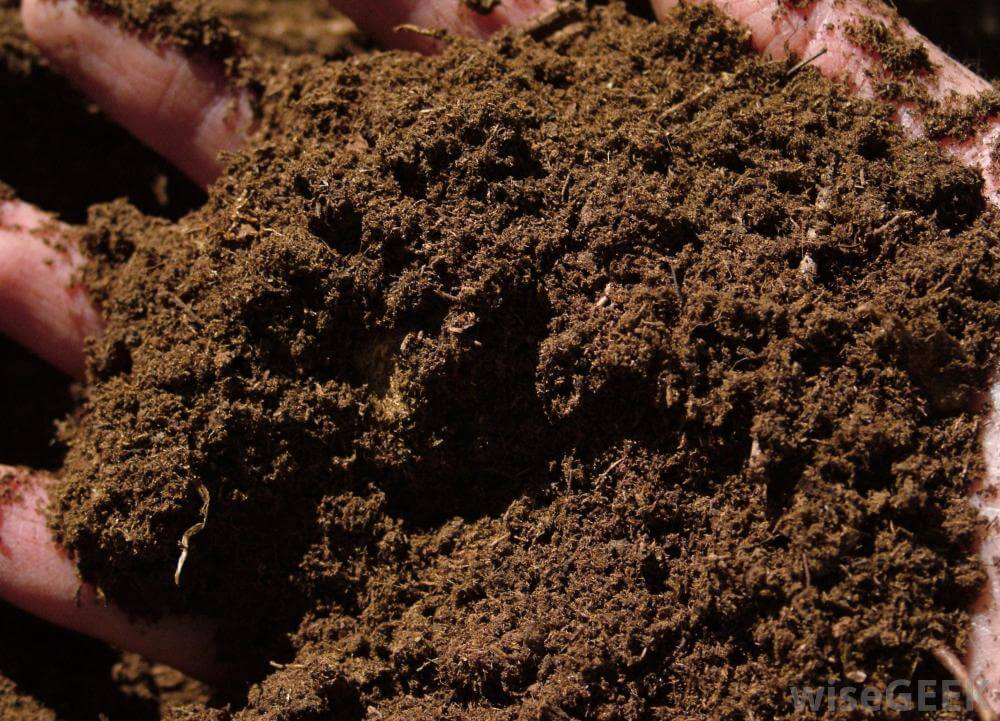
Quelle: wisgeek.com
Sein Nachteil ist jedoch sein Preis. Das Füllen einer leeren Box kostet uns ein wenig. Um beispielsweise eine 3 x 4 m große Box zu füllen, müssen wir etwas mehr als 200 PLN ausgeben. Der mangelnde ästhetische Wert von Torf mag für manche als Nachteil erscheinen. Leider kann gerade in dunklen Ställen die Einstreu aufgrund ihrer dunklen Farbe als verschmutzt wirken. Die Produzenten haben jedoch eine Lösung dafür gefunden, indem sie dem Torf Sägemehl beigemischt haben, was das Aussehen erheblich verbessert. Der Gehalt an Sägemehl in der Zusammensetzung verlängert jedoch geringfügig die Kompostierzeit (1-2 Monate).
Leider ist es keine geeignete Einstreu für den Stall, der offen ist (wie z.B. ein Englischer Stall) - im Sommer können Mücken die Einstreu befallen, und im Winter wird der Torf einfach gefrieren.
Wenn wir nach Einsparungen suchen, lohnt es sich nicht, in Gartentorf zu investieren oder Torf abzubauen - dies funktioniert aufgrund der mangelnden Verarbeitung (Temperatur, Staubentfernung) nicht als Einstreu in einer Pferdebox. Wir empfehlen Ihnen, nur solche Mischungen zu kaufen, die speziell dafür vorbereitet wurden.
6. Stroh und Holzpellets
Pellets werden in der Regel aus natürlichen Rohstoffen wie Stroh oder gepressten Nadeln von Nadelbäumen in Form von Granulat hergestellt. Sie enthalten keine chemischen Zusätze, Klebstoffe oder Bindemittel. Während des Produktionsprozesses wird die Streu einer thermischen Behandlung unterzogen, wodurch sie frei von allen Bakterien, Pilzen, Schimmelpilzen und deren Sporen ist. Seine Absorptionskapazität reicht von 6-10%. Das Einstreu bindet perfekt Ammoniak und beugt so Huf- und Lungenerkrankungen sowie unangenehmer Geruchsbildung vor.
Das Granulat hat in der Regel eine glatte, glänzende Oberfläche, die ein Stauben verhindert. Wenn es um die Kompostierung geht - Pellet Mist ist biologisch schnell abbaubar und kann als organischer Dünger verwendet werden.
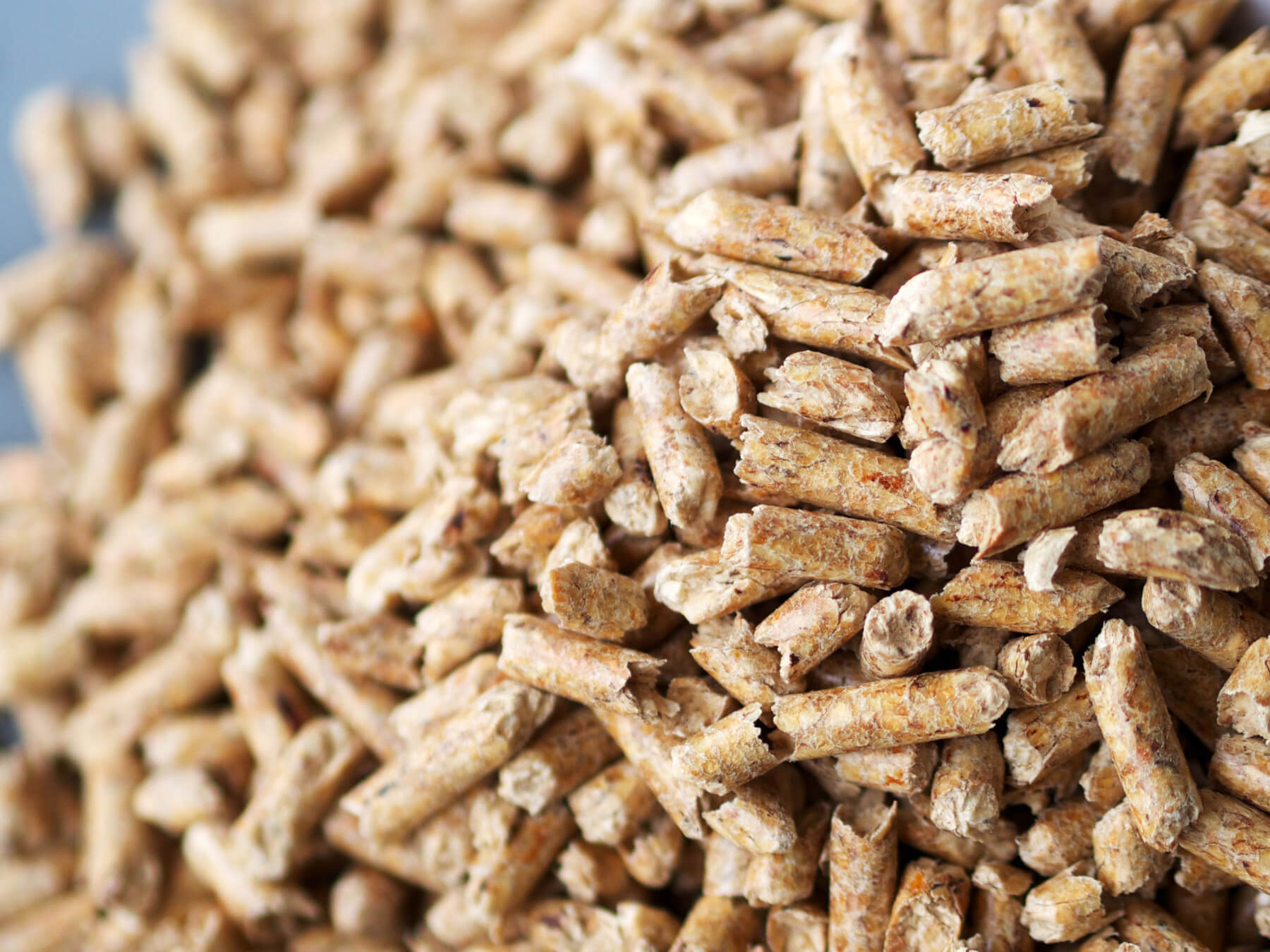
Pellet drzewny, źródło: uuni.net
Als größter Nachteil erweist sich leider der Preis. Für einen 1m2 der Box benötigen wir 10-12 kg, was bei einer Box von 3 x 4 m einen Bedarf von 120-150 kg Pellets ergibt, um eine leere Box zu füllen. Die Kosten für eine solche Füllung betragen 120-160 PLN. Es reicht aus, die Einstreu einmal pro Woche mit etwa 2-3 Säcken zu je 15 kg aufzufüllen (Kosten etwa 30-50 PLN). Natürlich lohnt es sich jeden Tag die Exkremente in der Box zu reinigen um die Einstreu länger nutzen zu können.
Am billigsten ist es, eine ganze Palette Pellet Säcke zu kaufen, aber dann brauchen wir einen Platz zum Lagern. Glücklicherweise benötigen sie keine besonderen Lagerbedingungen, weil die Hersteller sie in dicht gepackten Verpackungen anbieten.
Die Kosten für das Füllen einer leeren Box: 120-160 PLN (120-150 kg)
Gebrauch: man muss 2-3 15-kg-Säcke/Woche hinzufügen
Was soll man auswählen?
Es gibt keine einzig richtige Antwort auf die Frage, was man wählen soll. Es kommt in erster Linie auf die Kosten an, auf die wir vorbereitet sind, was unser Pferd braucht (Allergiker, Pferde mit RAO und Atemproblemen, Strahlfäulnis, die an Hufrehe gelitten haben, besondere Bedingungen im Stall brauchen). Wichtig ist auch, ob wir Probleme mit der Ernährung unseres Pferdes haben (Einstreu fressen) und wie viel Platz wir im Stall haben (Lagerung von neuer Einstreu und gebrauchtem – Kompost) und was sich in der Nähe des Stalls befindet (Haben wir einen Platz für Gülle? Haben wir jemanden, der sich nach der Kompostierungszeit darum "kümmert"?). Wenn wir all diese Faktoren berücksichtigen, werden wir auf jeden Fall das passende Einstreu auswählen.
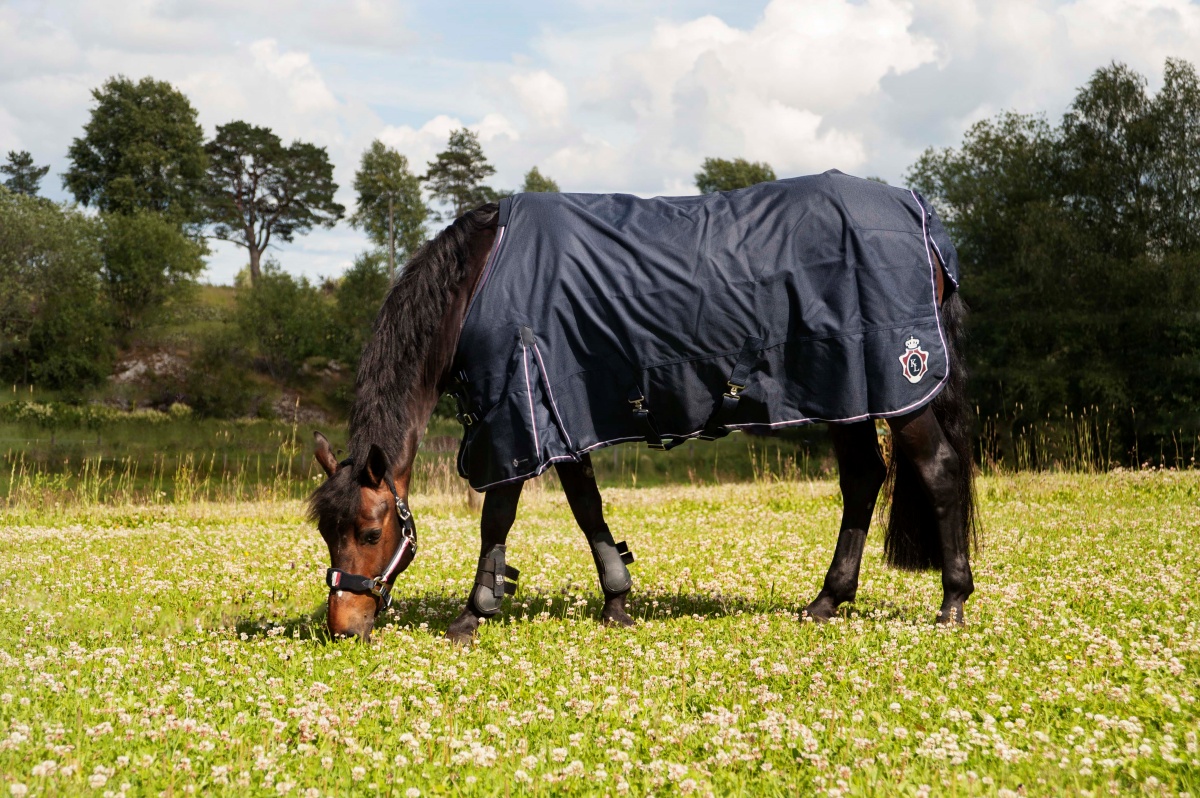
Kingsland Classic Halfter
In Polen ist langstieliges Stroh immer noch das am häufigsten gewählte Einstreu. Hoffentlich wird sich das in Zukunft ändern, denn es ist nicht die beste Wahl – weder aus gesundheitlicher Sicht für uns und unsere Pferde (Schwebestaub, Ammoniak, Pilzsporen …), noch aus ökologischer Sicht (lange Kompostierzeit).
Neuigkeiten von Equishop finden Sie in:




 Quelle: bgfons.com
Quelle: bgfons.com Quelle: 123rf.com
Quelle: 123rf.com Quelle: tigerpet.en.alibaba.com
Quelle: tigerpet.en.alibaba.com źródło: kehoefarming.com
źródło: kehoefarming.com Quelle: wisgeek.com
Quelle: wisgeek.com Pellet drzewny, źródło: uuni.net
Pellet drzewny, źródło: uuni.net

